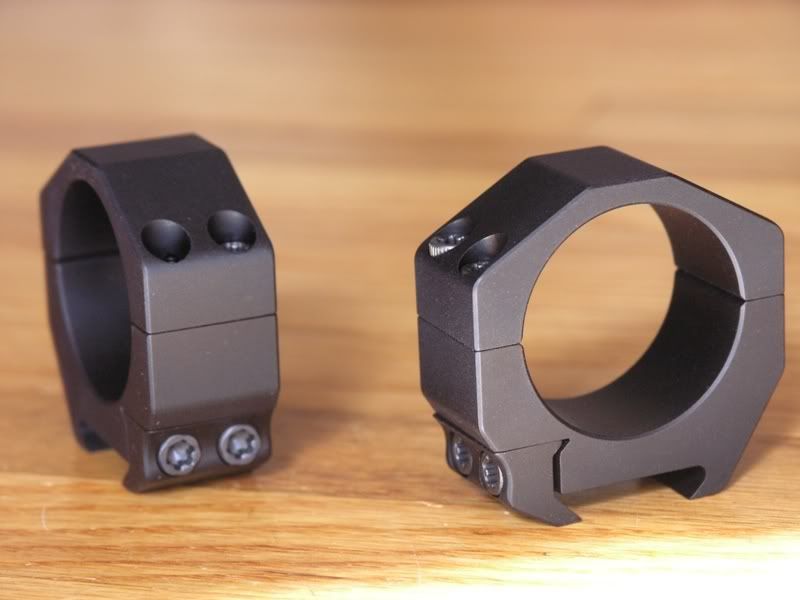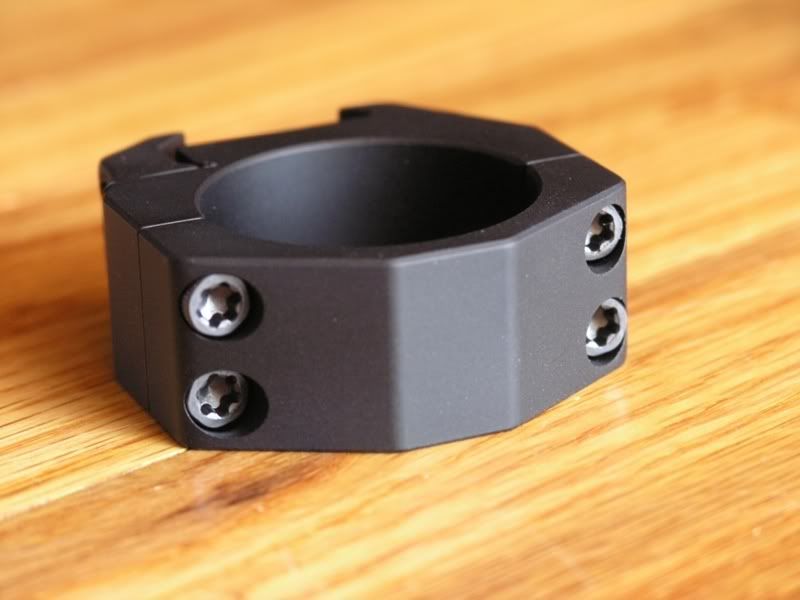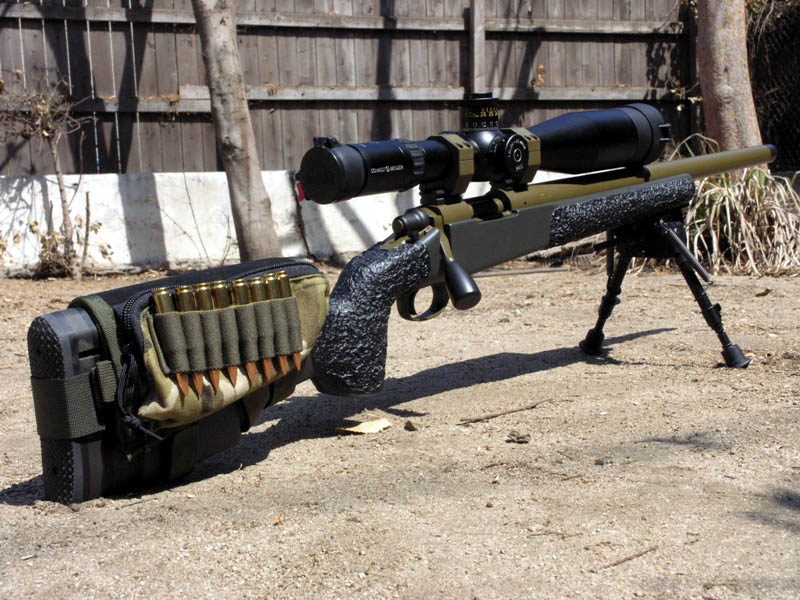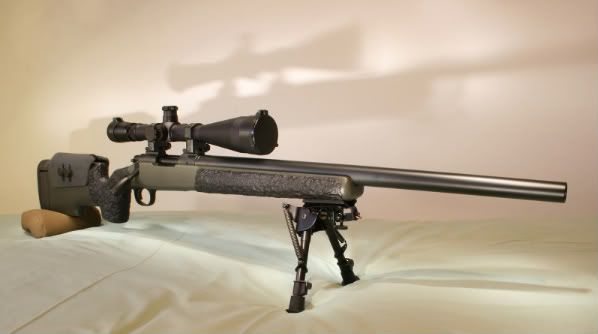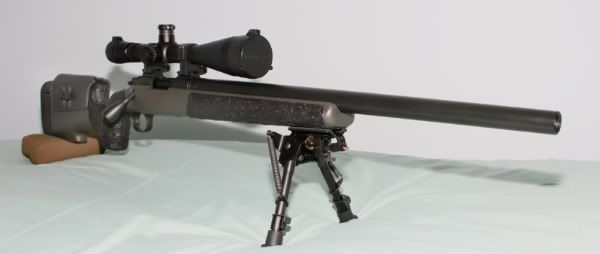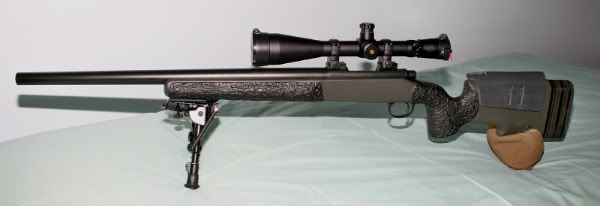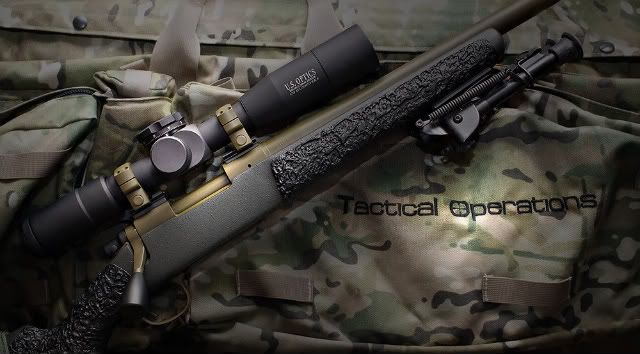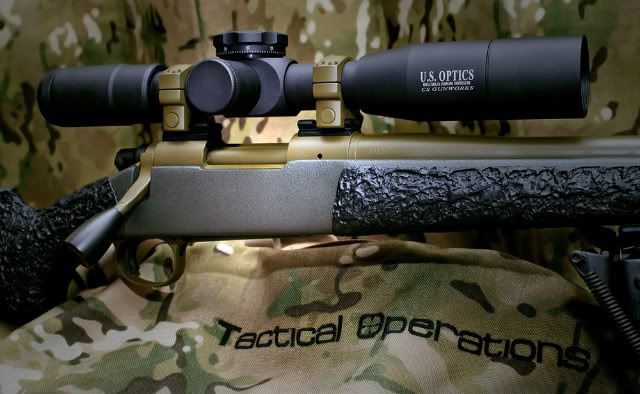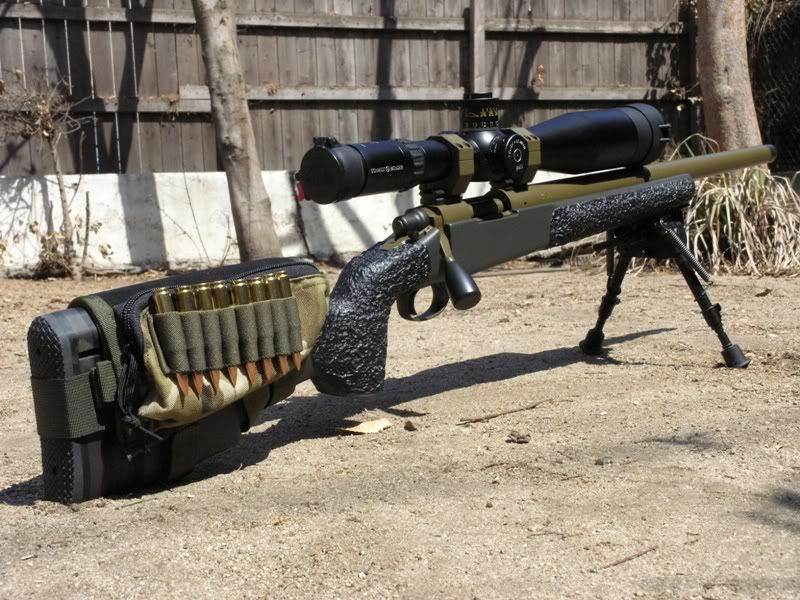Re: My Tac Ops X-Ray 51 is here!!!
<span style="font-weight: bold">Here's a copy & paste. It's a post at SC, I've only included the gunsmithing portion. </span>
Yes, we use similar components as many of our competitors.
But what we do with those components is slightly different than other builders.
Firstly, the myth or misconception is that ?trued is trued? when it comes to a receiver.
It isn't that simple. You need to address these questions:
What kind of surface finishes do you hold?
What is your tolerance on alignment? How do you inspect your work;
Dial caliper?; Depth gauge?; "Laser reflection"?.
Simple math will make it clear to any mechanical engineer, that
.0001 misalignment in the rifle equals .100 spread at 100 yards
The laws of similar triangles or basic trigonometry will easily prove this maxim.
Therefore, our job as rifle builders, is to constantly and consistently inspect our work to prevent accumulation of
those errors, and to maintain tolerances to .0001 or better.
An accumulation of .001 is fatal to consistent performance results.
With highly skilled technicians using very expensive and precise equipment, "squareness"
and "parallelism" of our bolts and
receiver lugs can be, and are, held to tolerances within 50 millionths of an inch.
The receiver is faced, and the threads are chased out with a single point tool
at the same setting as the lug operation,
insuring the "parallelism" of those surfaces as well.
Our tolerances are checked and insured through "laser metrology".
We used to check-lap our lugs with #320 abrasive, for 10 lifts of the bolt handle,
to give visual indication of alignment. We haven?t done that for at least 8 years.
With the high surface finishes we now achieve, we merely take a marking (Sharpie) pen and
Put a thin coat of ink on the receiver and bolt lugs, and let it dry.
With finger pressure on the bolt face, one lift of the bolt handle will wipe the surfaces
clean in the engagement areas. You can only do that if your work is correctly done.
Unless final lapping is properly applied, lug surfaces lose their concentric surface and produce grooves and
hollows that will eventually wear flat causing ever
increasing headspace. Poor, or excessive lapping results in tapered bolts and receiver lugs, reducing desirable contact area, resulting in uneven bolt lift, and sometimes excessive headspace that increases as the bolt is closed.
Lapping the bolt and/or receiver lugs is merely an in-exact attempt to improve the surface
finish of the machined lugs.
So, one can see there are several ways to blue print a receiver.
Perhaps, for some builders, true is square within .001. For Tactical Operations, square is 50 Millionths which is 20 times more accurate.
Moreover, at the same time the bolt lugs are being machined, we also bring the bolt
face perpendicular to the bolt axis. Our usual tolerances and finish prevail. The
firing pin hole is checked for concentricity at the same time. If it isn?t acceptable tolerances,
the bolt is scrapped before machining.
In regard to barrels, there are many that are more than acceptable,but we have found Krieger
barrels give us the best combination of accuracy and life.
Another misconception; A chamber is just a chamber, and a reamer is just a reamer.
chambering is not just chambering. What measure of alignment of the chamber to the
bore do you get ? How closely is the bore centered before chambering ?
001 ? 0001 ? .00005 ? How concentric is your chamber ? Is it concentric at all?
To within what limits ? Is it round ? Just how round is it? How do other builders measure roundness?
Krieger checked ours, and reported that we were only 2 millionths misaligned.
with all due humility and respect, I submit that this is probably better than most.
If one of you would like to call "FOUL" or "BS" on this, then I refer you to call Krieger (262-628-8558) and ask for
Mike. I think he will be more than able to support our statement. By the way, they independently measured and
verified the alignment.
Further, a .308 reamer is not just a .308 reamer.
The original .308 chamber was designed for use in semi-automatic and
full automatic firearms. Machinegun chambers are not the best for a bolt gun.
Even a ?minimum Match chamber? is just a minimum spec SAMMI chamber.
We design our own reamers for the calibers we provide. They are made for
closer tolerance, and "exactly" fit the match ammo we specify for the rifles.
The neck, throat, and lead are extremely critical to bullet alignment,
and are by far the most critical factors affecting accuracy.
Any bullet that starts into the lead misaligned, will not be turning on it?s mechanical
axis when it leaves the muzzle. The bullet will be flying with its nose and base
describing a tiny circle, instead of turning true on it?s mechanical axis.
This makes the bullet behave similar to an unbalanced gyroscope.
Due to precession forces, the bullet flies in a helix around the true line of flight.
On impact, that bullet can land on the target anywhere within the circle described
by the diameter of the helix. The greater the misalignment of the bullet, the greater
the size of the helix.
The greater the size of the helix, the greater the size of the group at all distances.
Our job as accuracy rifle builders is to reduce the alignment error of the bullet,
and eliminate factors that upset its flight (such as the muzzle face and crown), to keep
the helix diameter to the absolute minimum.
Headspace: What?s your tolerance and why?
Many, many times we have heard others tell us the bolt should
?close on a GO and halfway on a NO GO?.
That?s fine for a hunting rifle, or firearm that doesn?t require pinpoint accuracy.
We routinely use 0.000 head space with a maximum of 0.001
The reason, is that we have to have both locking lugs fully
seated at the time of ignition.
An unseated lug will move during ignition as it seats,
allowing the case head to wiggle or shift minutely, affecting the alignment
of the case in the chamber which affects bullet alignment and
helix diameter.
Having the locking lugs flat and ultra smooth also allows
the case head to align the bolt in the receiver, as it closes,
rather than the bolt influencing the cartridge.
For this reason the looseness of the Remington receiver doesn?t affect the way
our rifles shoot, and allows valuable space for the dirt and sand to fall
out of them. Our system of loose receiver/ floating bolt/ tight chamber,
seems to work on any bolt receiver we?ve tried it on.
It has been successful on a wide variety of bolt actions. It seems that the receiver
is just there to support the bolt until it is correctly locked up.
We hold tolerances and perform constant inspections,
we design and make special tools and fixtures, to do jobs,
there are stock items easily available but we choose to make our own.
Tac-Ops rifles are painstakingly built one at time.
Some would say such work costs too much in terms of time and tool investment.
As stated on our web site ?Every rifle, Suppressor, bag or any product we provide
is made as if it were being built and used for ourselves. Further more we also
hold a U.S. patent on one of our suppressor design


